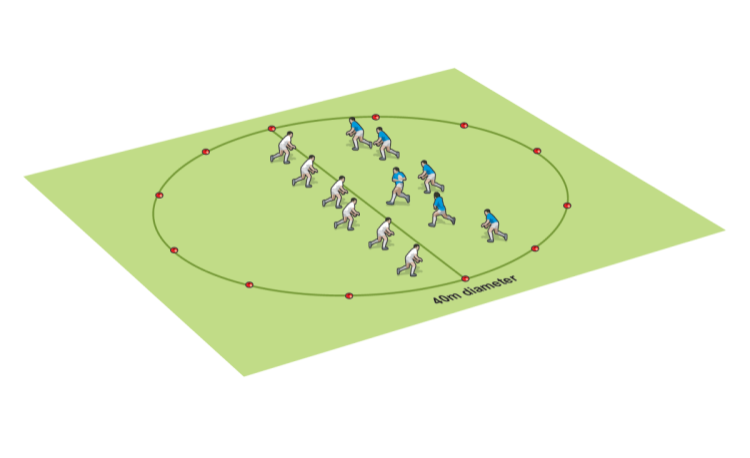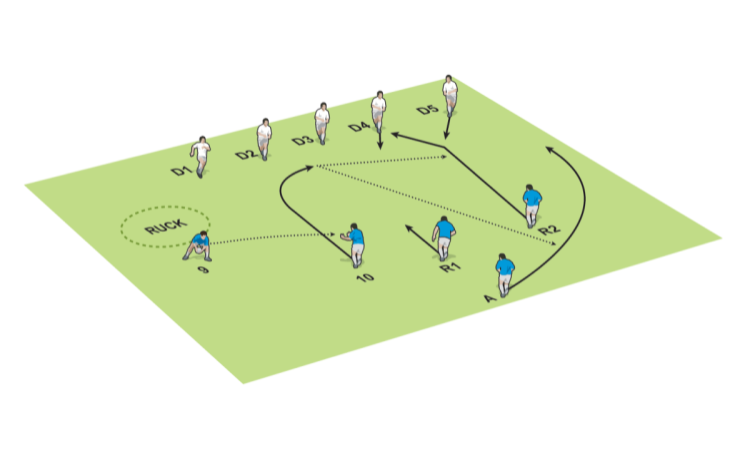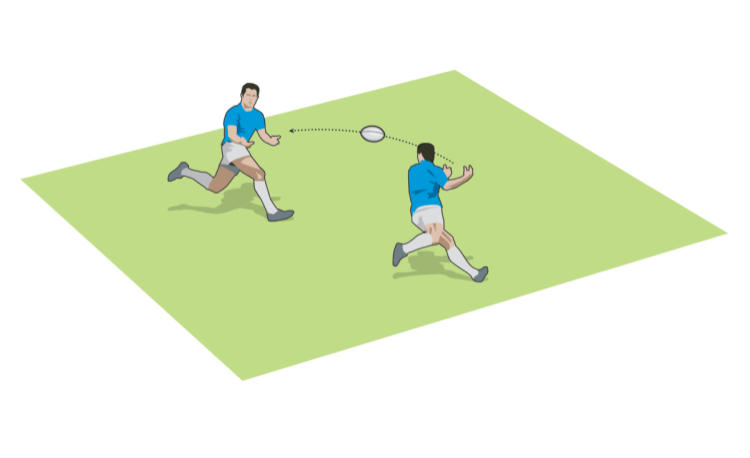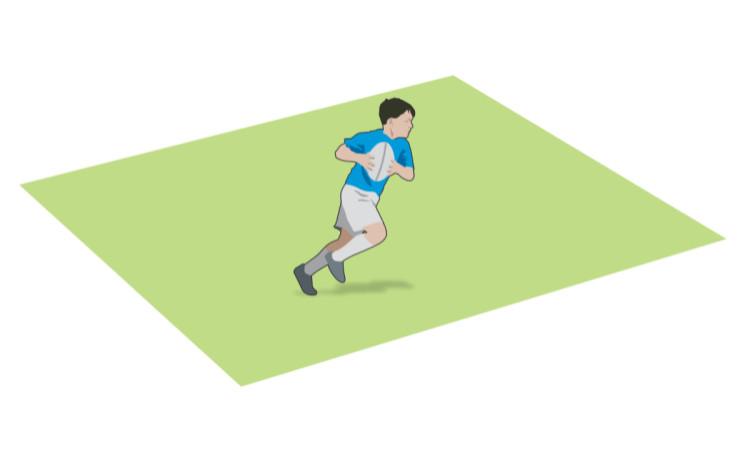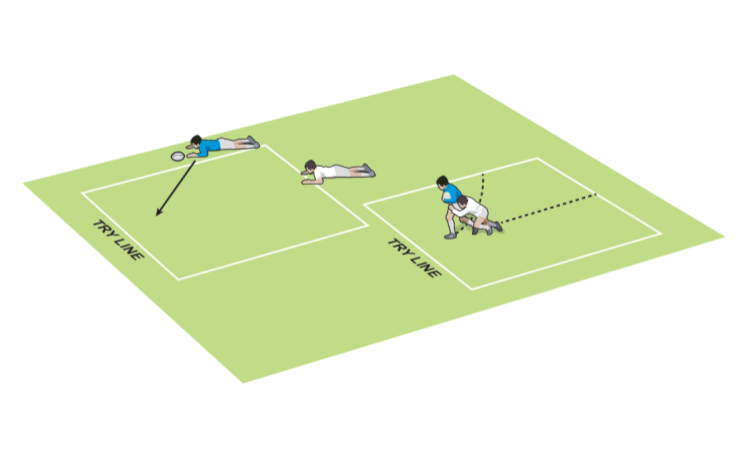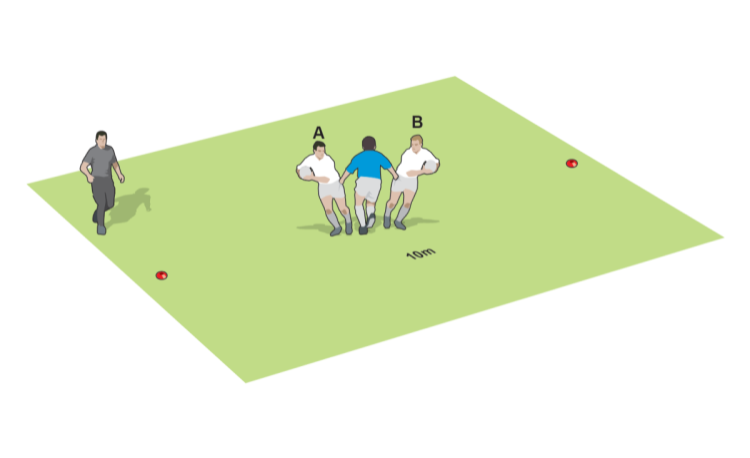You are viewing
1 of your 2 free articles
Manic passing squares
Passing and Handlingby Eamonn Hogan
Test the passing, visual and communication skills of players by having two balls being passed at the same time in opposite directions from one end of a grid to the other in order to score a goal.
A 10m square for every four players: Teams of two in each. Stack the squares and have one player from each team at both ends of the grid (picture 1). One end player holds a ball.
The balls are passed in to a team mate and passed from square to square until they reach the other end.
Whoever takes the final pass scores a goal for the team (picture 2).
Opponents can intercept any ball they wish and use it to score, but they can’t leave their own square. Both balls are scoring balls. Picture 3 shows how passes can be varied from square to square.
After every goal, grids shuffle along one to allow everyone a chance to play in the middle where most of the action happens.
The winning team is the one with the most goals at the end of the allotted time.
“Listen and react to a call from a team mate.”
“Look for the best person to pass to under pressure."
“Move a defender to make a pass.”
This is a pressure passing game that makes a player not only try to evade a defender but also look for another person to pass to very quickly.

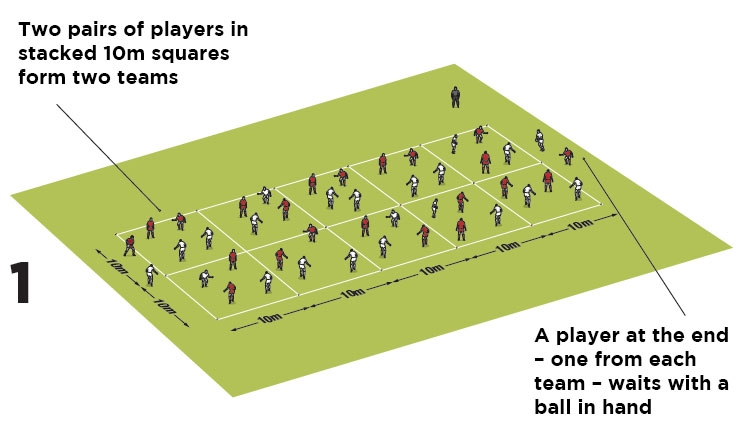
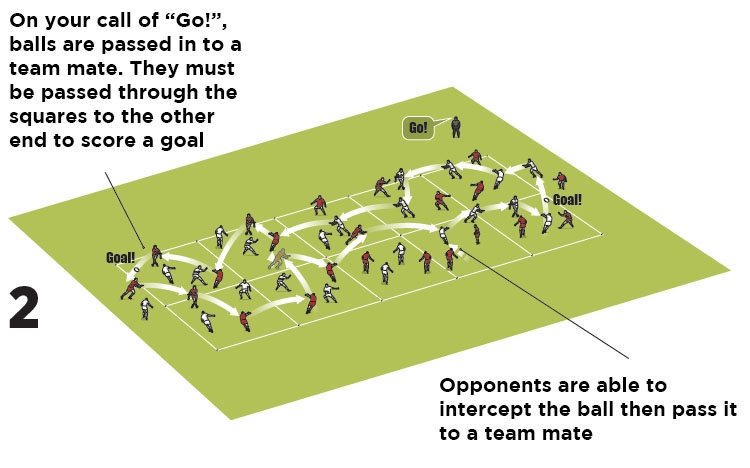
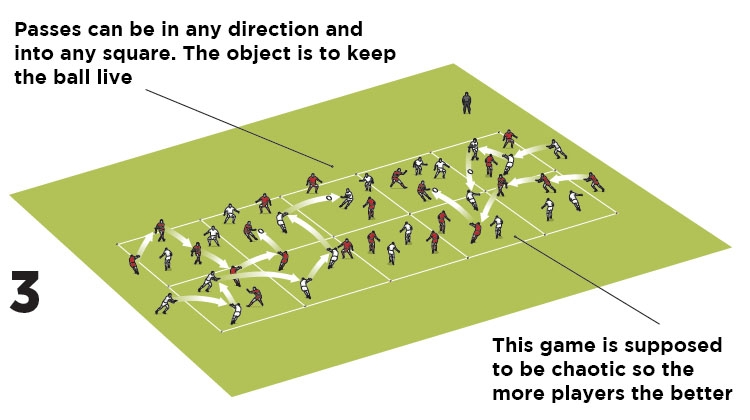
SET UP
A 10m square for every four players: Teams of two in each. Stack the squares and have one player from each team at both ends of the grid (picture 1). One end player holds a ball.
THE RULES
The balls are passed in to a team mate and passed from square to square until they reach the other end.
Whoever takes the final pass scores a goal for the team (picture 2).
Opponents can intercept any ball they wish and use it to score, but they can’t leave their own square. Both balls are scoring balls. Picture 3 shows how passes can be varied from square to square.
After every goal, grids shuffle along one to allow everyone a chance to play in the middle where most of the action happens.
SCORING
The winning team is the one with the most goals at the end of the allotted time.
TELL THEM
“Listen and react to a call from a team mate.”
“Look for the best person to pass to under pressure."
“Move a defender to make a pass.”
COACHING TIPS
This is a pressure passing game that makes a player not only try to evade a defender but also look for another person to pass to very quickly.



Related Files
Vol-1-Issue-540-E-Hogan-manic-passing-squares.pdfPDF, 4.4 MB
Newsletter Sign Up
Coaches Testimonials

Gerald Kearney, Downtown Las Vegas Soccer Club

Paul Butler, Florida, USA

Rick Shields, Springboro, USA

Tony Green, Pierrefonds Titans, Quebec, Canada
Subscribe Today
Be a more effective, more successful rugby coach
In a recent survey 89% of subscribers said Rugby Coach Weekly makes them more confident, 91% said Rugby Coach Weekly makes them a more effective coach and 93% said Rugby Coach Weekly makes them more inspired.
Get Weekly Inspiration
All the latest techniques and approaches
Rugby Coach Weekly offers proven and easy to use rugby drills, coaching sessions, practice plans, small-sided games, warm-ups, training tips and advice.
We've been at the cutting edge of rugby coaching since we launched in 2005, creating resources for the grassroots youth coach, following best practice from around the world and insights from the professional game.
More from us
© 2023 Rugby Coach Weekly
Part of Green Star Media Ltd. Company number: 3008779
We use cookies so we can provide you with the best online experience. By continuing to browse this site you are agreeing to our use of cookies. Click on the banner to find out more.




